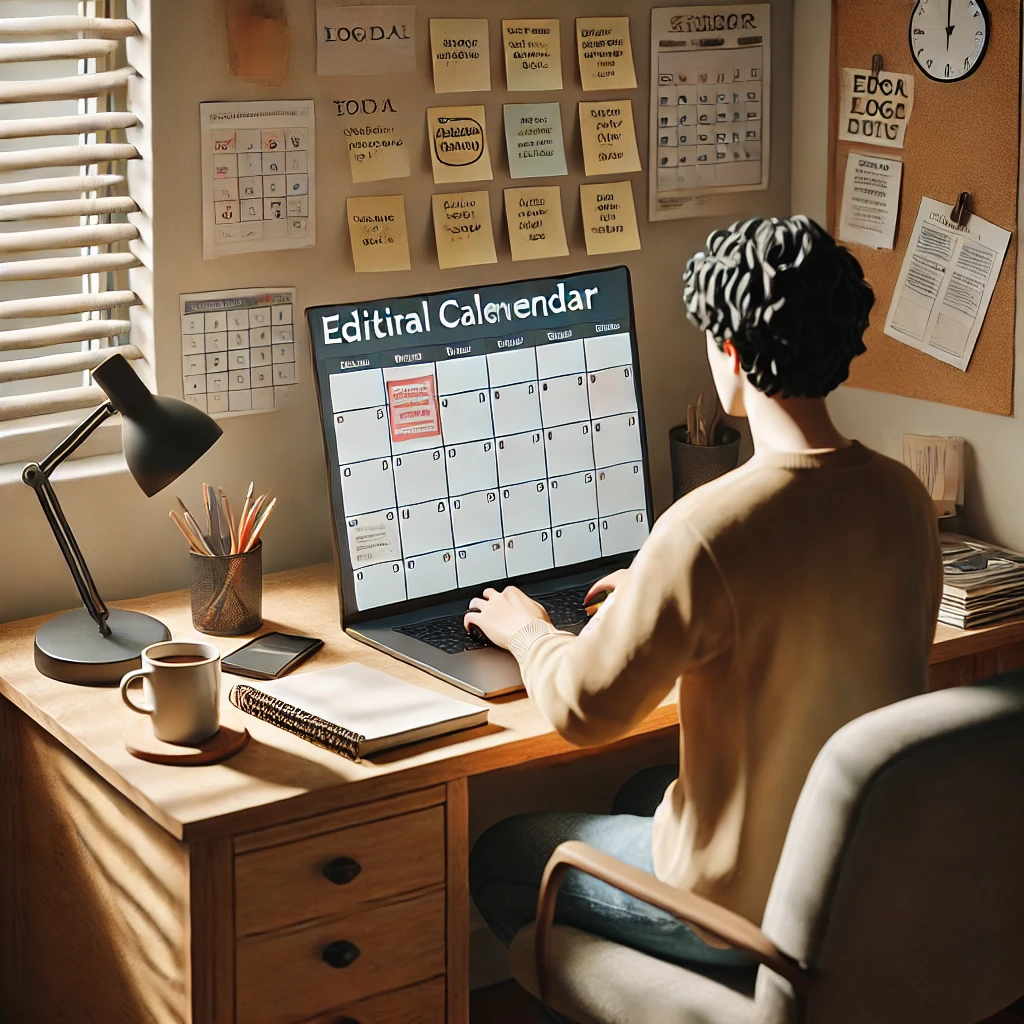
The Value of Developing a Consistent Posting Schedule and Editorial Calendar: Strategies for Maintaining Productivity and Audience Interest
In the fast-paced world of blogging, consistency is key to building a loyal audience, growing traffic, and establishing a strong online presence. One of the most effective ways to maintain that consistency is by developing a posting schedule and an editorial calendar. These tools not only help you stay productive but also keep your readers engaged and returning for more.
In this post, we’ll discuss the value of a consistent posting schedule, the role of an editorial calendar, and strategies for maintaining productivity while keeping your audience interested.
Why Consistency Matters in Blogging
Consistency is one of the most important factors for long-term success in blogging. Here’s why:
- Builds Audience Trust: When readers know you post regularly, they are more likely to return. Consistency creates an expectation, and readers will begin to anticipate your new content.
- Improves SEO: Search engines like Google favor websites that are updated frequently. Regular posting can improve your site’s ranking and drive more organic traffic over time.
- Enhances Engagement: Frequent, high-quality posts give your audience more opportunities to interact with your content, whether through comments, shares, or social media discussions.
- Establishes Authority: By posting consistently on a specific topic or niche, you position yourself as an expert, which can lead to greater authority in your field.
The Role of an Editorial Calendar
An editorial calendar is a roadmap for your blog’s content. It outlines what, when, and how frequently you will post, helping you stay organized and on track. Here are some key benefits:
- Content Planning: An editorial calendar allows you to map out topics in advance, ensuring that your content aligns with your overall goals and audience needs.
- Prevents Last-Minute Scrambling: Without a calendar, it’s easy to scramble for content ideas or rush to meet deadlines. An editorial plan gives you plenty of time to research, write, and polish your posts.
- Content Variety: Planning your posts ahead ensures you cover a diverse range of topics. For example, alternating between how-tos, interviews, product reviews, and opinion pieces can keep your content fresh.
- Seasonal or Event-Based Content: With an editorial calendar, you can schedule posts around holidays, product launches, or special events. This allows you to stay relevant and timely.
Strategies for Maintaining Productivity
Creating a consistent blog schedule is only half the battle. Staying productive and meeting your deadlines is crucial to ensure that your blog thrives. Here are some strategies to help:
1. Batch Content Creation
Batching involves grouping similar tasks together and completing them in one go. For example, you could outline multiple posts in one session, then write drafts in another. By focusing on one type of task at a time, you reduce mental switching costs and increase productivity.
- Tip: Dedicate specific days for research, writing, editing, and promoting your posts.
2. Set Realistic Deadlines
While it’s tempting to aim for daily posts, it’s important to set a realistic posting frequency that you can maintain long-term. For most bloggers, posting two or three times a week is manageable and sufficient to maintain audience interest.
- Tip: Quality trumps quantity. Focus on creating fewer but more valuable posts rather than churning out low-quality content.
3. Automate Repetitive Tasks
There are several tasks in blogging that you can automate to save time. Tools like Buffer or Hootsuite can schedule your social media posts, while plugins can handle tasks like SEO optimization or image compression.
- Tip: Use a tool like Trello or Asana to manage your editorial calendar and keep track of your progress.
4. Create a Content Bank
Having a bank of “evergreen” content (posts that remain relevant over time) can be a lifesaver on busy weeks or when you’re experiencing writer’s block. These are posts you can publish at any time, such as “how-to” guides, lists, or opinion pieces.
- Tip: Whenever you have extra time, write a few posts in advance and keep them in reserve.
5. Outsource When Needed
If you’re struggling to meet your blogging goals, consider outsourcing some tasks. Hiring a freelance writer, graphic designer, or virtual assistant can help lighten your workload.
- Tip: Focus on tasks that only you can do, such as creating your voice and engaging with your audience. Delegate tasks like formatting, image creation, or editing if possible.
Strategies for Maintaining Audience Interest
Consistency isn’t just about frequent posting—it’s also about keeping your audience engaged and interested. Here are some strategies to maintain interest:
1. Deliver Value with Every Post
Each post should offer something valuable, whether that’s a solution to a problem, a new perspective, or entertainment. If your content regularly delivers value, readers will keep coming back.
- Tip: Understand your audience’s pain points and create content that directly addresses them.
2. Engage with Readers
Your blog is a two-way street. Interact with readers by responding to comments, asking questions, and encouraging discussions. Building a relationship with your audience creates a sense of community and keeps them invested.
- Tip: Use email newsletters or social media to directly engage with your readers outside of the blog itself.
3. Stay Flexible and Adaptable
While consistency is important, it’s equally important to stay flexible. Pay attention to feedback, analytics, and changing trends. If a certain type of content resonates more with your audience, adjust your editorial calendar to meet their evolving needs.
- Tip: Use tools like Google Analytics to track which posts perform best and use that information to guide future content.
4. Incorporate Multimedia
Diversify your blog content by incorporating images, videos, infographics, and podcasts. This not only keeps things interesting for readers but also makes your content more shareable.
- Tip: Experiment with different formats, such as video tutorials, audio interviews, or even slideshows, to keep your audience engaged.
Developing a consistent posting schedule and maintaining an editorial calendar are crucial to the success of any blog. They help streamline content creation, maintain productivity, and ensure that your audience remains engaged and interested. By using these strategies to stay organized, productive, and audience-focused, you’ll be able to grow your blog steadily and build a loyal readership over time.
Consistency, planning, and engagement are the building blocks to creating a successful blog. Stay focused, stay organized, and remember to continually adapt to meet the needs of your growing audience.

